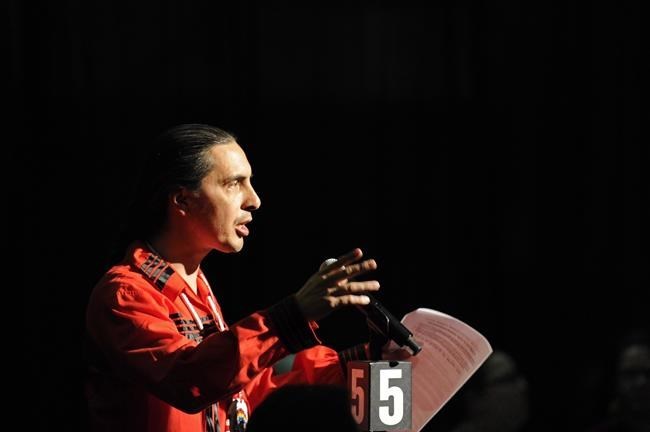Many First Nations across the country are bracing for the spread of the Omicron variant as leaders prepare for labour shortages caused by COVID-19 that could be more severe in Indigenous communities.
"We are well aware that Omicron is coming," said Grand Chief Arlen Dumas of the Assembly of Manitoba Chiefs.
There were less than 1,000 COVID-19 cases on reserves across the country before the holiday season, but that number has quickly surged.
In Manitoba alone over the past week, there have been 1,388 new COVID-19 cases among First Nations people, shows data from the First Nations COVID-19 task force released Friday. There are active cases in more than 40 Indigenous communities in the province despite many having high vaccination rates.
First Nations likely won't be spared the COVID-19-related labour shortages seen in health care, policing and other public sectors across the country, Dumas said. But the impacts can be much more significant, he added.
"What has happened in the past, unfortunately, is you have all the water plant operators getting COVID or having to isolate, but that function still needs to be served for the people," said Dumas.
To slow the spread, at least 10 First Nations in Manitoba have implemented travel restrictions or locked down. While the Delta variant remains dominant among Manitoba First Nations, the task force said it's expected to be overtaken by Omicron by next week.
"The Omicron variant has been making its way through Manitoba in an unprecedented way," Grand Chief Garrison Settee, who represents northern First Nations in Manitoba, said in a news release. "Our leaders are working tirelessly to contain the spread of COVID-19 and ensure essential services are available to community members."
Settee added that a lack of health-care staff is affecting the ability of some First Nations citizens to access their third COVID-19 vaccines.
Both chiefs said they've reached out to provincial and federal officials.
First Nations in Ontario's northwest also brought in significant restrictions recently. The Sioux Lookout Area First Nations declared a regional lockdown to curb the Omicron variant as none of the 33 First Nations have hospitals. The local health authority said it means they face an imminent threat of overloading public health resources.
Half the population of Bearskin Lake First Nation had tested positive for COVID-19 this week, which has left a large proportion of the community in isolation.
Chief Lefty Kamenawatamin said Friday that there were only about 30 front-line workers in the remote community able to deliver water, groceries and other essential supplies to people who are isolating.
"The situation in Bearskin Lake clearly demonstrates the disproportionate impact of COVID-19 for First Nations," Dr. Lloyd Douglas, a public health physician with the Sioux Lookout First Nations Health Authority, said in a news release this week.
"The impacts are devastating to First Nations communities who face major infrastructure shortages, boil water advisories, overcrowding and complex health conditions."
Intergovernmental Affairs Minister Dominic LeBlanc said Friday that the government will do whatever it can to support Indigenous communities facing COVID-19 crises.
First Nations health experts say they are still watching to see the impacts Omicron and what challenges the variant could bring to Indigenous communities during the latest wave of the pandemic.
The second and third wave saw higher rates of infection, hospitalization and death among Indigenous people in many areas of the country.
Dr. Marcia Anderson, who is with the First Nation pandemic response team, said that’s why they are approaching decisions with more caution, even as some provinces drop isolation requirements to five days.
She said there could be significant risks sending people who are potentially still infectious out of isolation considering the higher risk settings on First Nations.
"The COVID virus spreads very easily due to those underlying factors like overcrowded housing," Anderson said in an online video Friday, adding First Nations people are also at a higher risk of severe outcomes.
"We want to be more cautious in making these changes," she added.
This report by The Canadian Press was first published Jan. 8, 2022.
Kelly Geraldine Malone, The Canadian Press



